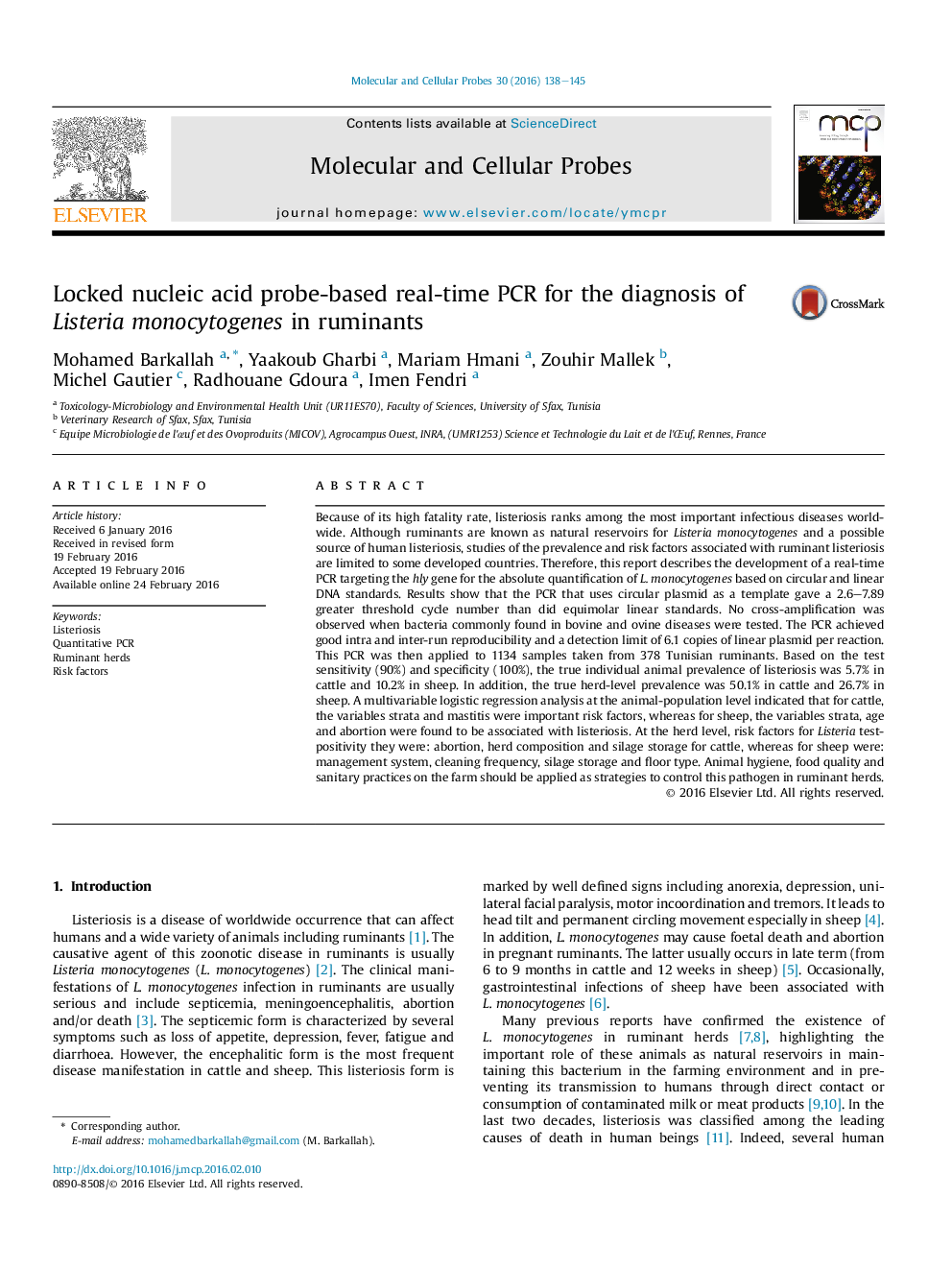| کد مقاله | کد نشریه | سال انتشار | مقاله انگلیسی | نسخه تمام متن |
|---|---|---|---|---|
| 2199585 | 1099601 | 2016 | 8 صفحه PDF | دانلود رایگان |

• We developed a TaqMan real-time PCR assay to quantify Listeria monocytogenes in veterinary samples.
• The performance of our TaqMan-PCR makes it a powerful alternative tool for large-scale screening programs during outbreaks.
• Paying attention to animal hygiene and food will help constitute more effective control programs against listeriosis.
Because of its high fatality rate, listeriosis ranks among the most important infectious diseases worldwide. Although ruminants are known as natural reservoirs for Listeria monocytogenes and a possible source of human listeriosis, studies of the prevalence and risk factors associated with ruminant listeriosis are limited to some developed countries. Therefore, this report describes the development of a real-time PCR targeting the hly gene for the absolute quantification of L. monocytogenes based on circular and linear DNA standards. Results show that the PCR that uses circular plasmid as a template gave a 2.6–7.89 greater threshold cycle number than did equimolar linear standards. No cross-amplification was observed when bacteria commonly found in bovine and ovine diseases were tested. The PCR achieved good intra and inter-run reproducibility and a detection limit of 6.1 copies of linear plasmid per reaction. This PCR was then applied to 1134 samples taken from 378 Tunisian ruminants. Based on the test sensitivity (90%) and specificity (100%), the true individual animal prevalence of listeriosis was 5.7% in cattle and 10.2% in sheep. In addition, the true herd-level prevalence was 50.1% in cattle and 26.7% in sheep. A multivariable logistic regression analysis at the animal-population level indicated that for cattle, the variables strata and mastitis were important risk factors, whereas for sheep, the variables strata, age and abortion were found to be associated with listeriosis. At the herd level, risk factors for Listeria test-positivity they were: abortion, herd composition and silage storage for cattle, whereas for sheep were: management system, cleaning frequency, silage storage and floor type. Animal hygiene, food quality and sanitary practices on the farm should be applied as strategies to control this pathogen in ruminant herds.
Journal: Molecular and Cellular Probes - Volume 30, Issue 3, June 2016, Pages 138–145